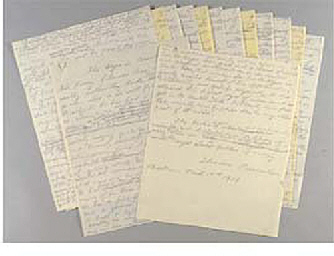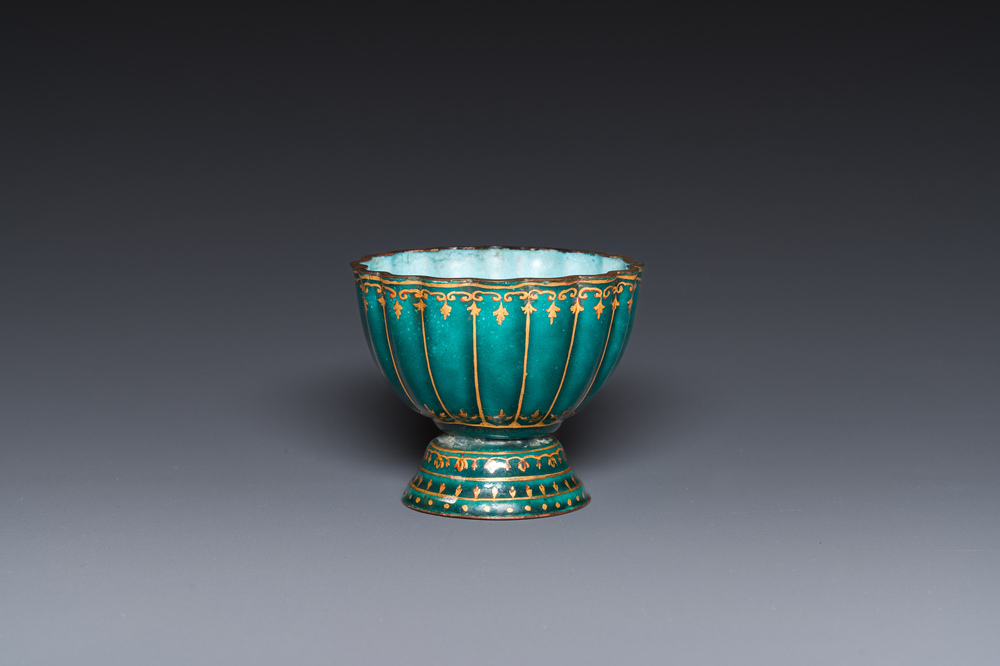Colour: Black with dark red leather interior Cylinders: 6; 6,597cc Gears: 3 + reverse Power: 135bhp Produced: 1919-1930 Production: 2,200 (approximately) The choice of European Royalty, Indian Maharajahs, Hollywood film stars and industrial tycoons, the legendary Hispano-Suiza was superbly engineered and imitated unashamedly by some of the world’s leading car manufacturers. Although the marque was of Spanish origin, it was Hispano-Suiza’s French-built cars that established it in the front rank of luxury automobile manufacturers following the end of WWI. During the conflict, Hispano engines had powered some of the Allies’ finest fighter aircraft, and post-war the marque would adopt the stork emblem of French ‘ace’ Georges Guynemer’s Escadrille des Cicognes, whose SPAD biplanes had used Hispano’s V8 aero engine. Not surprisingly, the first post-war Hispano drew heavily on this expertise, being powered by a Marc Birkigt-designed, 6,597cc, overhead-camshaft six derived from one half of a proposed V12 aero engine. A seven-bearing design enjoying the benefit of pressure-fed lubrication, the latter was built in unit with the three-speed gearbox and featured aluminium-alloy pistons running in steel cylinder liners screwed into the light-alloy block. Maximum power was a heady 135bhp produced at just 2,400rpm, and the almost flat torque curve afforded walking-pace-to-85mph performance in top gear. A handful of prototype H6Bs was made at the company’s Barcelona factory - King Alfonso XIII taking delivery of an early example in April 1918 - before production proper commenced at Bois-Colombes, Paris. Sensation of the 1919 Paris Show, the H6B featured a light yet rigid four-wheel-braked chassis that matched its state-of-the-art power unit for innovation. Indeed, so good were its servo-assisted brakes that Rolls-Royce acquired the rights to build the design under licence. The H6B combined performance with flexibility, comfort with good handling, and safety with reliability in a manner which enabled Hispano-Suiza to compete successfully with Rolls-Royce, Bentley, Bugatti, Isotta Fraschini and the United States' luxury marques. Large enough to accommodate formal coachwork, it was also fast enough to appeal to the more sportingly inclined: aperitif king Andre Dubonnet won the Coupe Boillot at Boulgone in 1921, while Europe’s coachbuilders vied to build their finest coachwork on this genuinely thoroughbred chassis. The finish of the Hispano-Suiza was superlative and the car’s inherent glamour was such that it was featured in two popular novels of the early 1920s, l'Homme de l'Hispano and The Green Hat. The world’s most advanced automobile at the time of its introduction and for many years thereafter, the H6B was catalogued until 1930, by which time a little over 2,000 chassis had been completed. The H6B was surely the favourite chassis of the world’s greatest coachbuilders. Freestone & Webb Ltd, established in London in 1923, produced this most elegant Sedanca de Ville coachwork for ‘Diamond Harry’ - Sir Harry Oakes - a US-born multi-millionaire who summered at his grand estate at Bar Harbour in the Bahamas, was murdered in Nassau in the 1930s and prompted the book Who Killed Sir Harry Oakes? and the TV screenplay based thereon, Passion and Paradise. With his fabulous wealth, the Hispano-Suiza was an obvious choice and the superb fittings in this semi-formal car fully reflect the elegance of the era. The quintessentially English coachwork by Freestone & Webb Ltd represents the state of the art in coachbuilding for 1928, with fabric-covered scuttle and panelling contributing to lightness and silent travel. The Sedanca de Ville styling was, of course, the height of fashion in the late 1920s and throughout the 1930s, and this particular car is very similar to the Freestone & Webb H6B selected for illustration in Johnnie Green’s standard work, The Legendary Hispano-Suiza (page 163) - if not in fact the same car. Superbly equipped with Stephan Grebel
Colour: Black with dark red leather interior Cylinders: 6; 6,597cc Gears: 3 + reverse Power: 135bhp Produced: 1919-1930 Production: 2,200 (approximately) The choice of European Royalty, Indian Maharajahs, Hollywood film stars and industrial tycoons, the legendary Hispano-Suiza was superbly engineered and imitated unashamedly by some of the world’s leading car manufacturers. Although the marque was of Spanish origin, it was Hispano-Suiza’s French-built cars that established it in the front rank of luxury automobile manufacturers following the end of WWI. During the conflict, Hispano engines had powered some of the Allies’ finest fighter aircraft, and post-war the marque would adopt the stork emblem of French ‘ace’ Georges Guynemer’s Escadrille des Cicognes, whose SPAD biplanes had used Hispano’s V8 aero engine. Not surprisingly, the first post-war Hispano drew heavily on this expertise, being powered by a Marc Birkigt-designed, 6,597cc, overhead-camshaft six derived from one half of a proposed V12 aero engine. A seven-bearing design enjoying the benefit of pressure-fed lubrication, the latter was built in unit with the three-speed gearbox and featured aluminium-alloy pistons running in steel cylinder liners screwed into the light-alloy block. Maximum power was a heady 135bhp produced at just 2,400rpm, and the almost flat torque curve afforded walking-pace-to-85mph performance in top gear. A handful of prototype H6Bs was made at the company’s Barcelona factory - King Alfonso XIII taking delivery of an early example in April 1918 - before production proper commenced at Bois-Colombes, Paris. Sensation of the 1919 Paris Show, the H6B featured a light yet rigid four-wheel-braked chassis that matched its state-of-the-art power unit for innovation. Indeed, so good were its servo-assisted brakes that Rolls-Royce acquired the rights to build the design under licence. The H6B combined performance with flexibility, comfort with good handling, and safety with reliability in a manner which enabled Hispano-Suiza to compete successfully with Rolls-Royce, Bentley, Bugatti, Isotta Fraschini and the United States' luxury marques. Large enough to accommodate formal coachwork, it was also fast enough to appeal to the more sportingly inclined: aperitif king Andre Dubonnet won the Coupe Boillot at Boulgone in 1921, while Europe’s coachbuilders vied to build their finest coachwork on this genuinely thoroughbred chassis. The finish of the Hispano-Suiza was superlative and the car’s inherent glamour was such that it was featured in two popular novels of the early 1920s, l'Homme de l'Hispano and The Green Hat. The world’s most advanced automobile at the time of its introduction and for many years thereafter, the H6B was catalogued until 1930, by which time a little over 2,000 chassis had been completed. The H6B was surely the favourite chassis of the world’s greatest coachbuilders. Freestone & Webb Ltd, established in London in 1923, produced this most elegant Sedanca de Ville coachwork for ‘Diamond Harry’ - Sir Harry Oakes - a US-born multi-millionaire who summered at his grand estate at Bar Harbour in the Bahamas, was murdered in Nassau in the 1930s and prompted the book Who Killed Sir Harry Oakes? and the TV screenplay based thereon, Passion and Paradise. With his fabulous wealth, the Hispano-Suiza was an obvious choice and the superb fittings in this semi-formal car fully reflect the elegance of the era. The quintessentially English coachwork by Freestone & Webb Ltd represents the state of the art in coachbuilding for 1928, with fabric-covered scuttle and panelling contributing to lightness and silent travel. The Sedanca de Ville styling was, of course, the height of fashion in the late 1920s and throughout the 1930s, and this particular car is very similar to the Freestone & Webb H6B selected for illustration in Johnnie Green’s standard work, The Legendary Hispano-Suiza (page 163) - if not in fact the same car. Superbly equipped with Stephan Grebel



.jpg)


/105511/Internet%20Image%201.jpg)


/105162/Internet%20Image%201.jpg)
/46853/Internet%20Image%201.jpg)
/41451/Internet%20Image%201.jpg)

Testen Sie LotSearch und seine Premium-Features 7 Tage - ohne Kosten!
Lassen Sie sich automatisch über neue Objekte in kommenden Auktionen benachrichtigen.
Suchauftrag anlegen